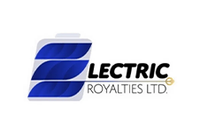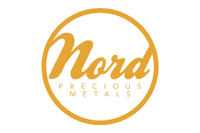
Cobalt prices have gained nearly 50 percent since September, and reached a six-year high last week.
Cobalt prices continue to rise, and last week was no different. On Wednesday (February 15), high-grade cobalt prices rose 6 percent to reach $19.45 to $19.29 a pound, a six-year high.
Overall, the metal has risen nearly 50 percent since September. It’s been pushed upward in large part by increased demand for electric vehicles, primarily from China. Cobalt is a component of the lithium-ion batteries used in electric vehicles, and increasing amounts of the metal will be required as these vehicles become more common.
As Benchmark Minerals Intelligence analyst Caspar Rawles said via email, “[w]e forecast battery demand for cobalt to go from 50,000 tonnes in 2016 to 80,000 tonnes by the end of 2020, and from a cobalt producer’s perspective supply needs to keep up with, or be close to, expanded demand.”
Glencore gets behind cobalt
While electric vehicle demand is a key driver of cobalt prices, last week the metal was also boosted by the news that Glencore (LSE:GLEN) has upped its involvement in the copper and cobalt markets. It paid $960 million to increase its stakes in two copper-cobalt operations in the Democratic Republic of Congo.
The move has been widely hailed as a good decision. Rawles commented, “[Glencore has] a larger stake in two key assets that will help them ride the wave of expansion of the energy storage market as well as what appears to be an upturn in depressed copper prices.”
But while the move is a good one for Glencore, it won’t necessarily help fill the world’s increasing demand for cobalt.
“Glencore already had a controlling interest in both of these projects prior to the deal, and I don’t forecast any increase in supply that isn’t already expected in the market,” Rawles explained.
In fact, many market participants are calling for a cobalt deficit in the coming years.
“The refined cobalt market will fall into a 3,000 tonne deficit this year following seven years of overcapacity and oversupply,” CRU Senior Consultant Edward Spencer has said.
Similarly, Macquarie has said that a deficit of 885 tonnes is expected next year, with deficits of 3,205 tonnes and 5,340 tonnes expected in 2019 and 2020, respectively.
Where should investors focus?
Given those factors, it’s unsurprising that many investors are wondering how they can take advantage of the rapid rise in cobalt prices.
Glencore and other large miners, such as Eurasian Resources Group, Sherritt International (TSX:S) and China Molybdenum (HKEX:3993), offer some exposure to the metal, but because cobalt is usually produced as a by-product of copper and nickel, companies with pure-play projects are tricky to find.
Rawles recommends that investors interested in investing in cobalt look at copper- and nickel-focused companies that are mining or exploring for cobalt, “unless [they] are lucky enough to find a [junior with a] deposit that is primarily cobalt,” Rawles said.
“I think the key for smaller companies is to be targeting value-added products further downstream than simply a concentrate, such as cobalt sulphate, targeting the battery supply chain,” he added.
Our recent overview of TSX-listed cobalt companies that have seen year-to-date gains highlights a number of larger companies with exposure to cobalt, as well as some smaller companies looking to break into the space. Click here to take a read.
Don’t forget to follow us @INN_Resource for real-time news updates!
Securities Disclosure: I, Priscila Barrera, hold no direct investment interest in any company mentioned in this article.


